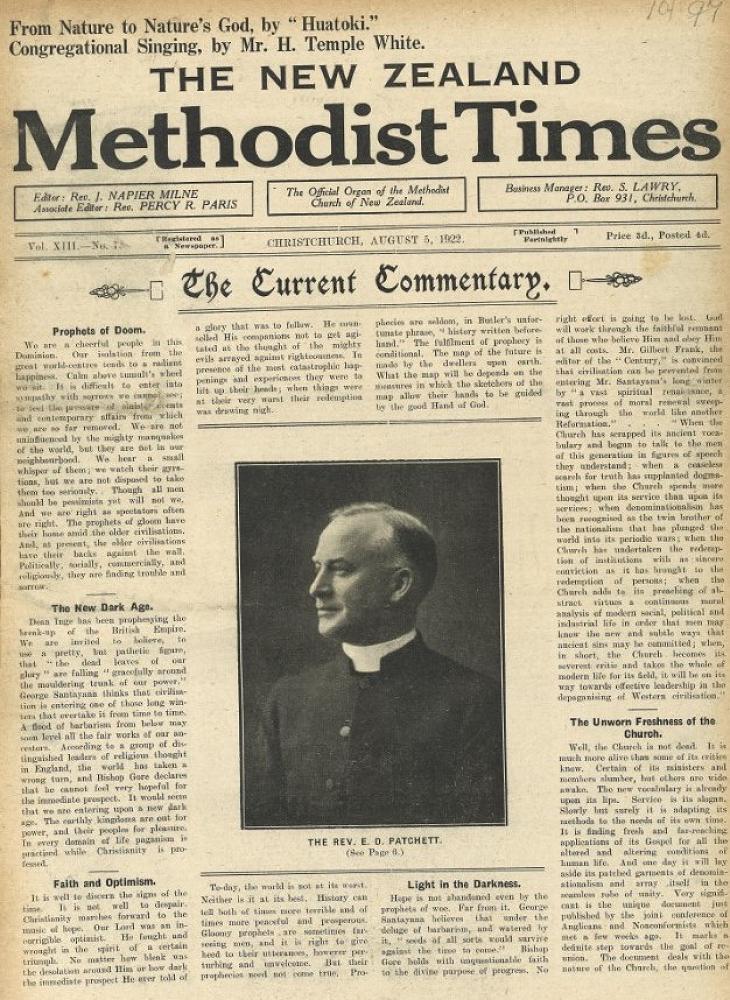
“We Are a Cheerful People”
The Future of the Methodist Newspaper
One hundred years ago the New Zealand Methodist Times had an editor, Napier Milne, and an assistant editor, Percy Paris. Their front-page article on 5 August 1922 isn’t attributed - we have to guess whether it was by one or both. It starts off with a very bleak view of the world, speaking of prophets of doom whose homes are in the “older civilisations” who have their backs to the wall. The Dean of Westminster, WR Inge, known as the ‘Gloomy Dean’ had been talking about the break-up of the Empire. In response to this sort of talk, the editors referred to New Zealanders as a “cheerful people”, whose isolation from the world stage tends to a “radiant happiness” - an exact quote!
The editors spoke of discerning the signs of the times, while remaining committed to Christ the “incorrigible optimist”. Christianity marched to the “music of hope”. The Church, like Jesus, must talk to its people in their own language. There should develop a ceaseless search for the truth, to replace dogmatism. It was a time when denominationalism and nationalism should be seen for what they are – twin-brothers that “plunge us into wars.”
It was time for the Church to engage in dialogue with institutions and not just individuals. It was time for an analysis of modern social and political life; time to take the lead in the de-paganising of western civilisation. It was time for the Church to find a new vocabulary to better serve its needs, and to adapt its methods to the needs of the times.
All this brave talk was based on the natural assumption that there was such a thing as ‘the Church’ and that the search for a shared purpose within the varied expressions of Christianity was a worthwhile goal. “The Church is getting on; we may be of good cheer. Christ is coming to us walking on the troubled waters and all will be well with the Church and the world.”
James Napier Milne (1874-1957), of Aberdonian Presbyterian background, spent most of his ministry in significant English circuits. He came to New Zealand in 1918 and spent just six years here before returning to his roots. His abilities were quickly recognised and he became editor of the NZMT after just four years. He was well-read and articulate. While he was highly regarded it seems likely in the light of his later career that he did not easily fit in. The article quoted sounds more like that from a man looking at New Zealand from the outside as Milne was, rather than from an insider, as was so for Percy Paris.
The notion of dialogue with society was tested a few months later in November 1922 when Milne published a special ‘Human Welfare’ issue in connection with the temperance referendum. It ran to 30,000 issues – the biggest ever. How on earth, nowadays, does the Church engage in dialogue with society in general? Is the Church newspaper read by any but loyal Methodists? These are important matters being considered at this very moment.
There have been Methodist newspapers for just over 150 years. They are an essential part of our history and taken together paint a vivid and, I dare say, exact picture of the ‘People called Methodist.’ If we can think of them as part of a continuing dialogue with our neighbours - New Zealanders – how are we to continue the conversation?
